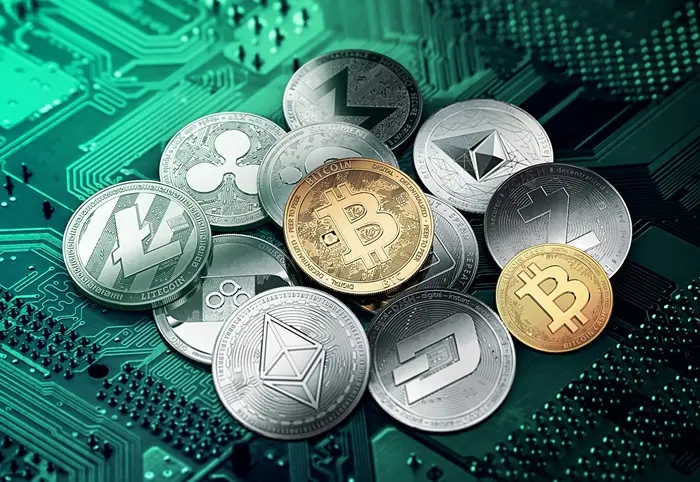In the rapidly evolving financial landscape, digital currencies have emerged as a significant force, challenging and complementing traditional financial systems. Among these digital currencies, USD Crypto, specifically represented by stablecoins like USDT (Tether) and USDC, holds a unique position. This article aims to provide a comprehensive understanding of USD Crypto, exploring its definition, characteristics and the broader implications for the financial industry.
What Is USD Crypto?
USD Crypto, broadly defined, refers to digital currencies whose value is pegged to the United States dollar (USD). These digital currencies leverage blockchain technology, offering a blend of the stability associated with traditional fiat currencies and the decentralization and security of digital assets.
1. The Concept of Stablecoins
Stablecoins, as the name implies, are cryptocurrencies designed to have minimal price volatility compared to mainstream digital currencies like Bitcoin and Ethereum. Stability here is a relative concept. Traditional assets such as fiat currencies and gold are generally considered more stable due to various factors.
Fiat Currencies: The issuance and value of fiat currencies are based on the economic strength and creditworthiness of the issuing country. During periods of economic stability and governmental integrity, fiat currencies maintain their value.
Gold: Known for its limited supply, chemical stability, and ease of division, gold has historically been a store of value. Its inherent properties make it a natural hedge against inflation and economic uncertainty.
Stablecoins aim to anchor their value to these stable assets, primarily fiat currencies like the USD or gold, to ensure price stability.
2. Types of Stablecoins
Stablecoins can be broadly classified into different generations, each with its unique mechanism for maintaining stability:
Stablecoin 1.0: Centralized Asset-Backed Model
The first generation of stablecoins uses real-world assets as collateral to create digital stable currencies. The most prominent example is Tether’s USDT.
Tether (USDT): Each USDT issued is backed by one USD held in reserve by Tether Limited. This one-to-one peg ensures that the value of USDT remains stable relative to the USD. USDT’s simplicity and direct backing by USD make it widely adopted in digital exchanges, providing a stable medium for transactions and a hedging tool during market volatility.
Stablecoin 2.0: Over-Collateralized Cryptocurrency Model
The second generation uses cryptocurrencies as collateral, often in excess of the stablecoin’s value, to ensure stability. If the value of the collateral drops, users can add more collateral or face liquidation to maintain the stablecoin’s price.
MakerDAO (DAI): MakerDAO issues DAI, which is collateralized by Ethereum (ETH). The mechanism ensures that DAI maintains its pegged value through smart contracts that automatically adjust collateral requirements.
Characteristics of USD Crypto
USD Crypto combines the stability of traditional currencies with the innovative features of blockchain technology, offering several distinct advantages:
Stability: By pegging their value to the USD, stablecoins provide a stable store of value in the volatile cryptocurrency market. This stability is crucial for investors seeking to hedge against market risks or use digital currencies for daily transactions.
Decentralization: Unlike traditional bank-issued currencies, USD Crypto leverages blockchain technology, allowing for decentralized, peer-to-peer transactions. This removes the need for intermediaries, reducing transaction costs and increasing efficiency.
Transparency and Security: Blockchain’s immutable ledger ensures that all transactions are transparent and tamper-proof. This transparency helps in building trust among users and reduces the risk of fraud.
Global Reach: USD Crypto can be used anywhere with an internet connection, making it an ideal solution for cross-border payments and remittances. This global reach fosters financial inclusion, enabling individuals and businesses in underserved regions to access financial services.
Challenges and Opportunities
Despite its potential, USD Crypto faces several challenges, including regulatory hurdles, technical limitations, and market volatility.
1. Regulatory Hurdles
Different countries have varying regulatory approaches to cryptocurrencies, creating a complex regulatory environment.
Coordination: International coordination is necessary to develop a consistent regulatory framework that supports innovation while mitigating risks.
2. Technical Limitations
While blockchain technology offers significant advantages, it also faces scalability and energy consumption issues.
Innovation: Continued innovation in blockchain technology is essential to address these challenges, ensuring that USD Crypto remains a viable and efficient financial tool.
3. Market Volatility
Although stablecoins aim to minimize volatility, they can still be affected by broader market trends and geopolitical events.
Risk Management: Investors and users must manage risks associated with market volatility, diversifying their portfolios and using stablecoins as a hedge against uncertainty.
Conclusion
USD Crypto represents a significant development in the financial landscape, offering a stable, decentralized alternative to traditional currencies. Its unique blend of stability and innovation makes it suitable for various applications, from global payments to creator economies.
As the market matures, regulatory clarity, technological advancements, and integration into traditional finance will drive USD Crypto’s growth. While challenges remain, the opportunities presented by USD Crypto are vast, offering the potential to revolutionize the way we think about and use money.
Related topics:

































